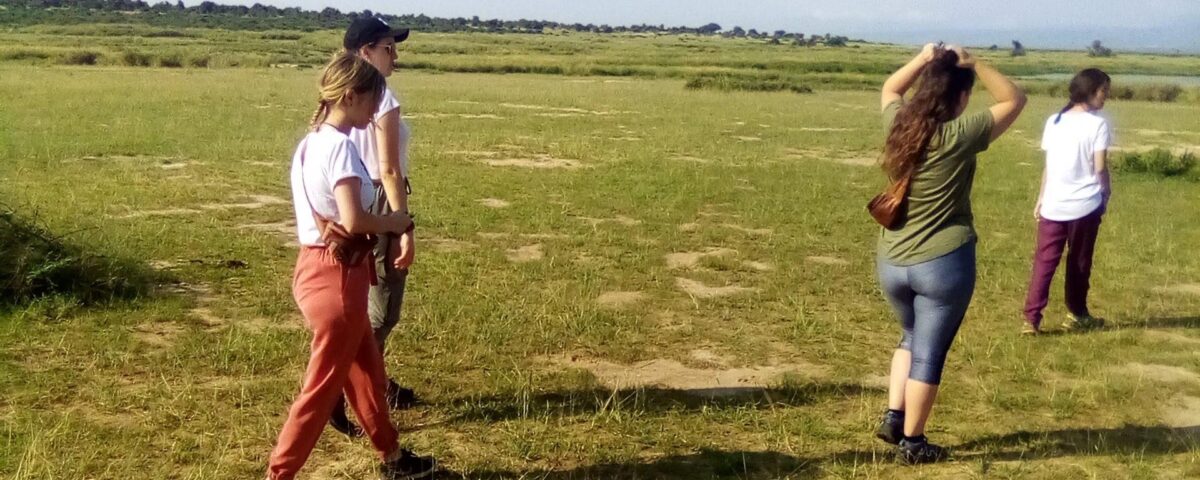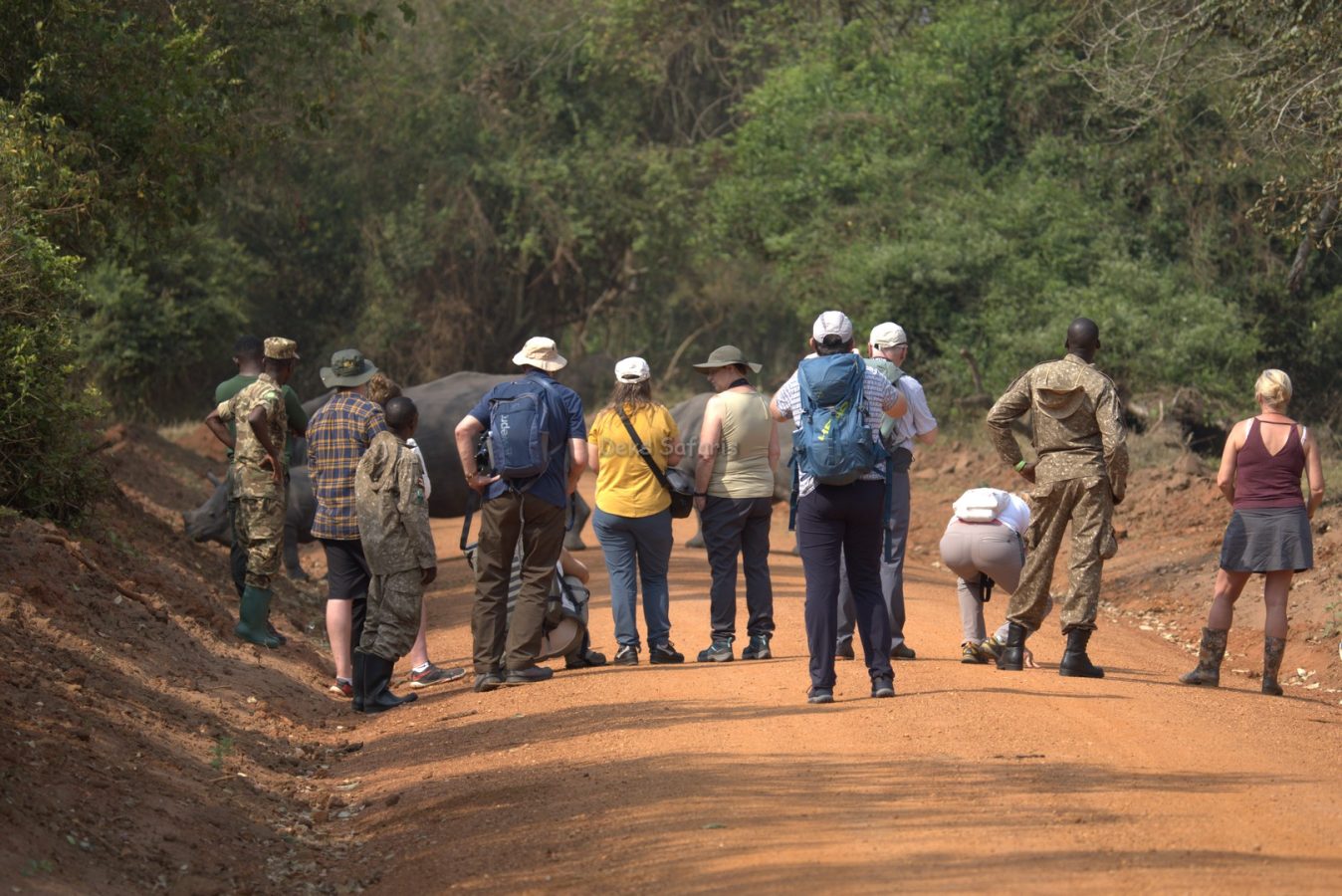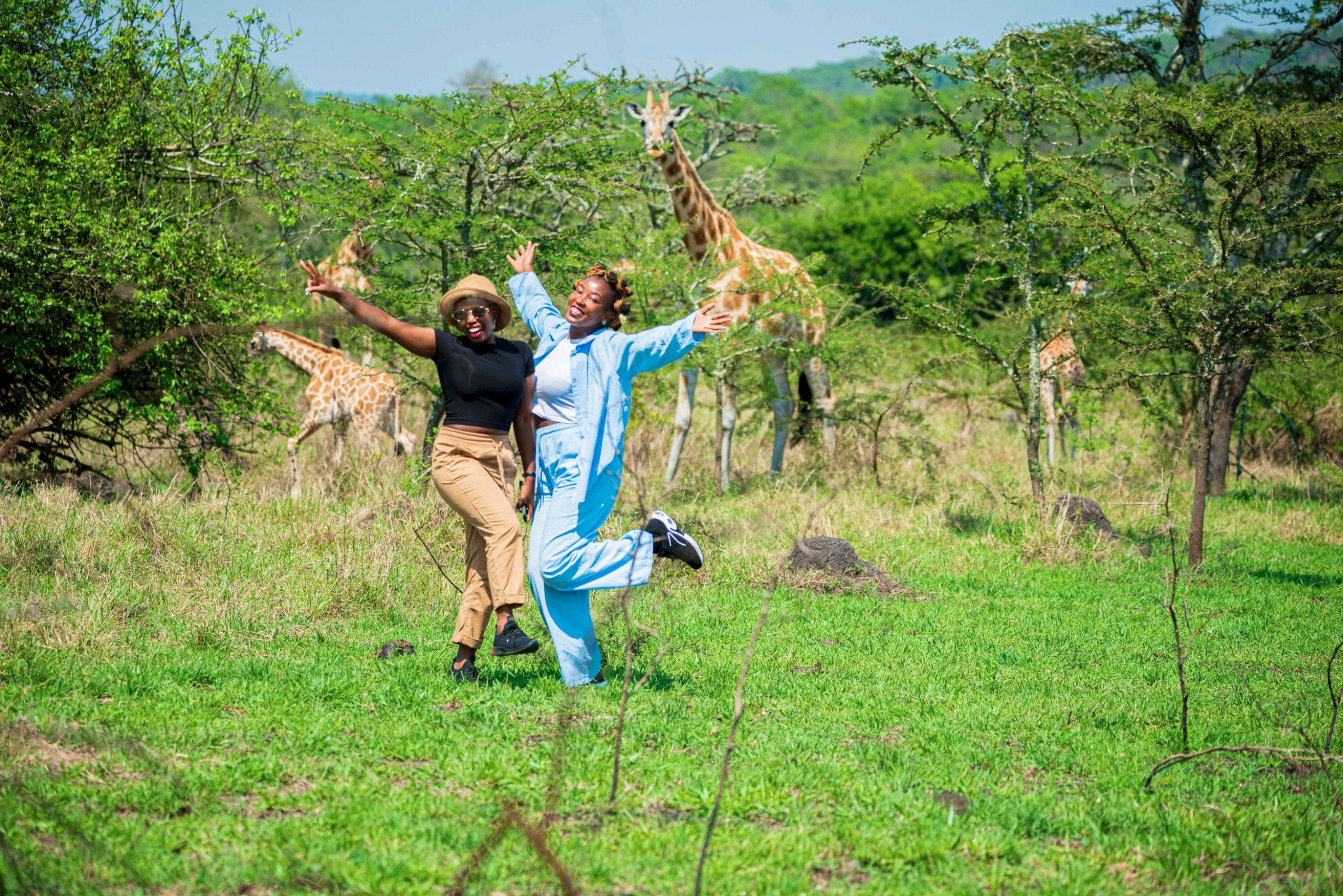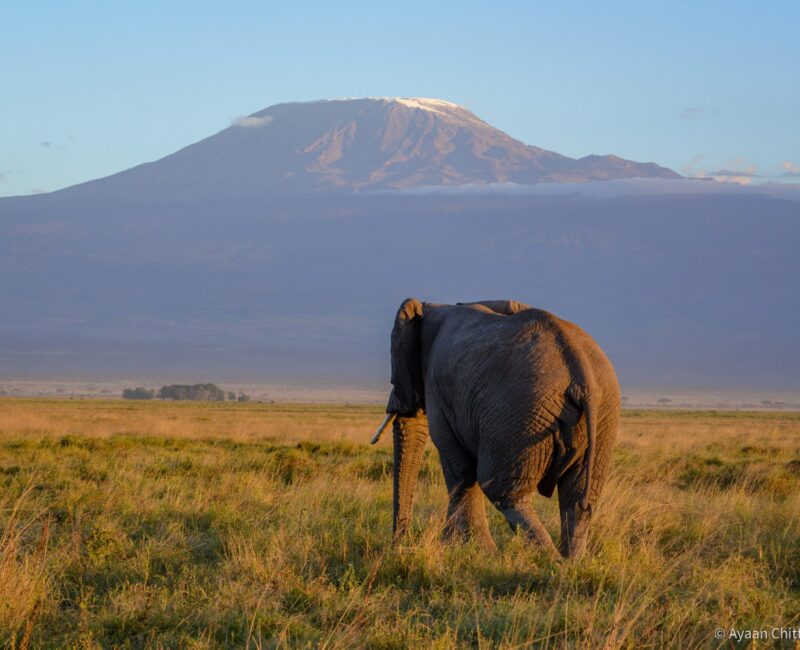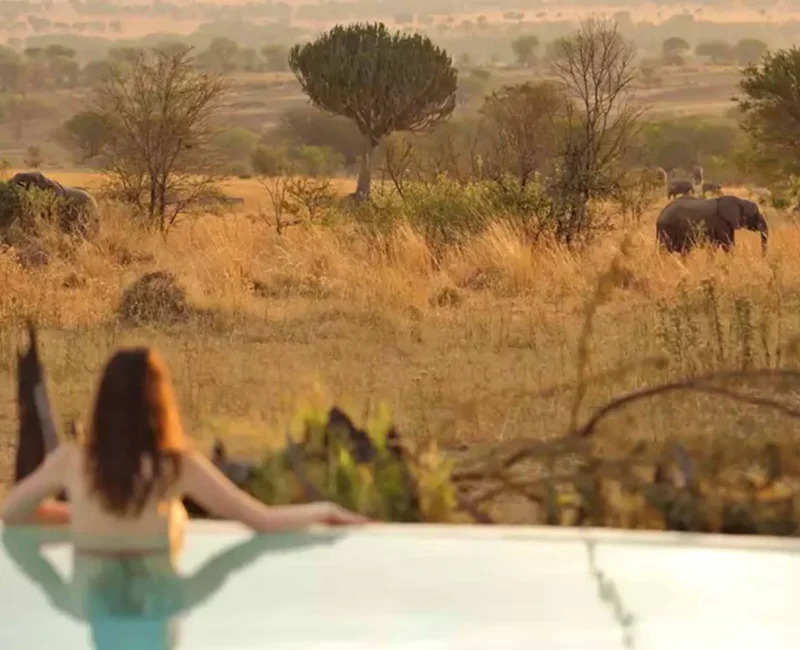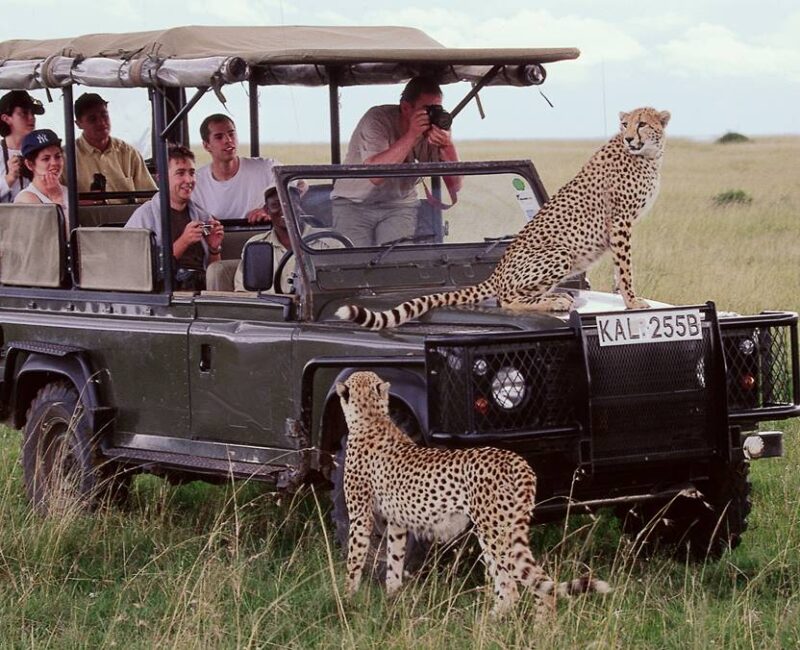
What Is the Difference Between Birding in Uganda and Kenya?
October 13, 2025
What Is the Difference Between Chimpanzee Tracking and Chimpanzee Habituation?
October 14, 2025What Makes a Walking Safari Different from a Game Drive in Uganda?
What makes a walking safari different from a game drive in Uganda, and why should travelers consider it for their Uganda Safaris? Walking safaris offer an immersive, up-close experience that allows tourists to engage with Uganda’s diverse landscapes, wildlife, and ecosystems on foot. Unlike traditional game drives that rely on vehicles to observe animals from a distance, walking safaris provide an intimate connection to nature, emphasizing the sights, sounds, and scents of the African wilderness.
Introduction: Experiencing Wildlife Up Close
EcoQuest Safaris specializes in organizing walking safaris that complement Uganda Wildlife Safaris, Uganda Gorilla Trekking Safaris, Uganda Birding Safaris, and Uganda Cultural Safaris. These experiences are designed to provide both adventure and education, allowing visitors to understand wildlife behavior, ecological relationships, and the cultural significance of natural habitats. Walking safaris are ideal for travelers seeking more than just a sightseeing adventure—they offer active participation in nature while fostering a deeper appreciation for conservation efforts in Uganda.
Walking safaris can also be integrated into broader Uganda Best Safaris itineraries. For example, a walking safari in Murchison Falls National Park or Kidepo Valley National Park can be combined with Uganda Gorilla Trekking Safaris in Bwindi or Mgahinga, creating a multi-dimensional wildlife adventure. Travelers can alternate between tracking gorillas, observing chimpanzees, exploring wetlands for birding, and walking through savannahs to witness Uganda’s iconic wildlife up close. Understanding the difference between walking safaris and game drives helps tourists choose experiences that align with their interests, stamina, and sense of adventure.
How Is a Walking Safari Conducted in Uganda?
What makes a walking safari different from a game drive in Uganda, and how are these excursions typically organized? Walking safaris are conducted on foot, guided by highly trained rangers who are experts in wildlife behavior, tracking, and safety. In Uganda, these safaris often take place in national parks and reserves such as Murchison Falls National Park, Kidepo Valley National Park, and Bwindi Impenetrable Forest National Park, providing access to a range of habitats from dense forests to open savannahs.
During a walking safari, participants learn to read animal tracks, identify bird calls, and observe subtle ecological interactions that are often missed from vehicles. Can walking safaris be combined with birding? Absolutely. Uganda Birding Safaris are perfectly suited to walking excursions, as guests can quietly approach habitats where shoebills, kingfishers, and malachite kingfishers thrive. Additionally, walking safaris encourage mindfulness and environmental awareness, offering insights into local flora, medicinal plants, and the interconnectedness of ecosystems.
Walking safaris are also a window into Uganda Cultural Safaris. Guides often share stories of how local communities interact with wildlife, the role of conservation in sustaining livelihoods, and traditional practices connected to the land. By walking through forests or savannahs, travelers can gain a unique perspective on Uganda’s biodiversity, complementing other experiences like Uganda Gorilla Trekking Safaris and Uganda Chimpanzee Safaris. These excursions are ideal for guests who want a hands-on, educational adventure that balances wildlife observation with cultural engagement.
How Does a Game Drive Differ?
What makes a walking safari different from a game drive in Uganda, and why might some travelers prefer a vehicle-based experience? Game drives are conducted in 4×4 safari vehicles, offering the advantage of covering large areas quickly and comfortably. They are ideal for observing Uganda Wildlife Safaris species such as elephants, lions, giraffes, buffalo, and leopards across savannahs, wetlands, and forest edges.
While game drives allow visitors to see more animals over a shorter period, the experience is less immersive compared to walking safaris. Can game drives be combined with gorilla trekking? Yes, many Uganda Best Safaris itineraries integrate game drives in parks like Queen Elizabeth National Park or Lake Mburo National Park with Uganda Gorilla Trekking Safaris, offering a balance between large wildlife viewing and primate encounters. Game drives are also well-suited for families, travelers with mobility limitations, or those who prefer a leisurely exploration of wildlife habitats.
A key distinction is the sensory experience. On a walking safari, guests hear rustling leaves, smell wet earth, and experience wildlife behavior firsthand. On a game drive, these experiences are filtered through the vehicle’s frame, offering a broader view but a less tactile connection to the environment. Both walking safaris and game drives are complementary; understanding their differences allows travelers to curate a Uganda Safari experience that is both comprehensive and personalized.
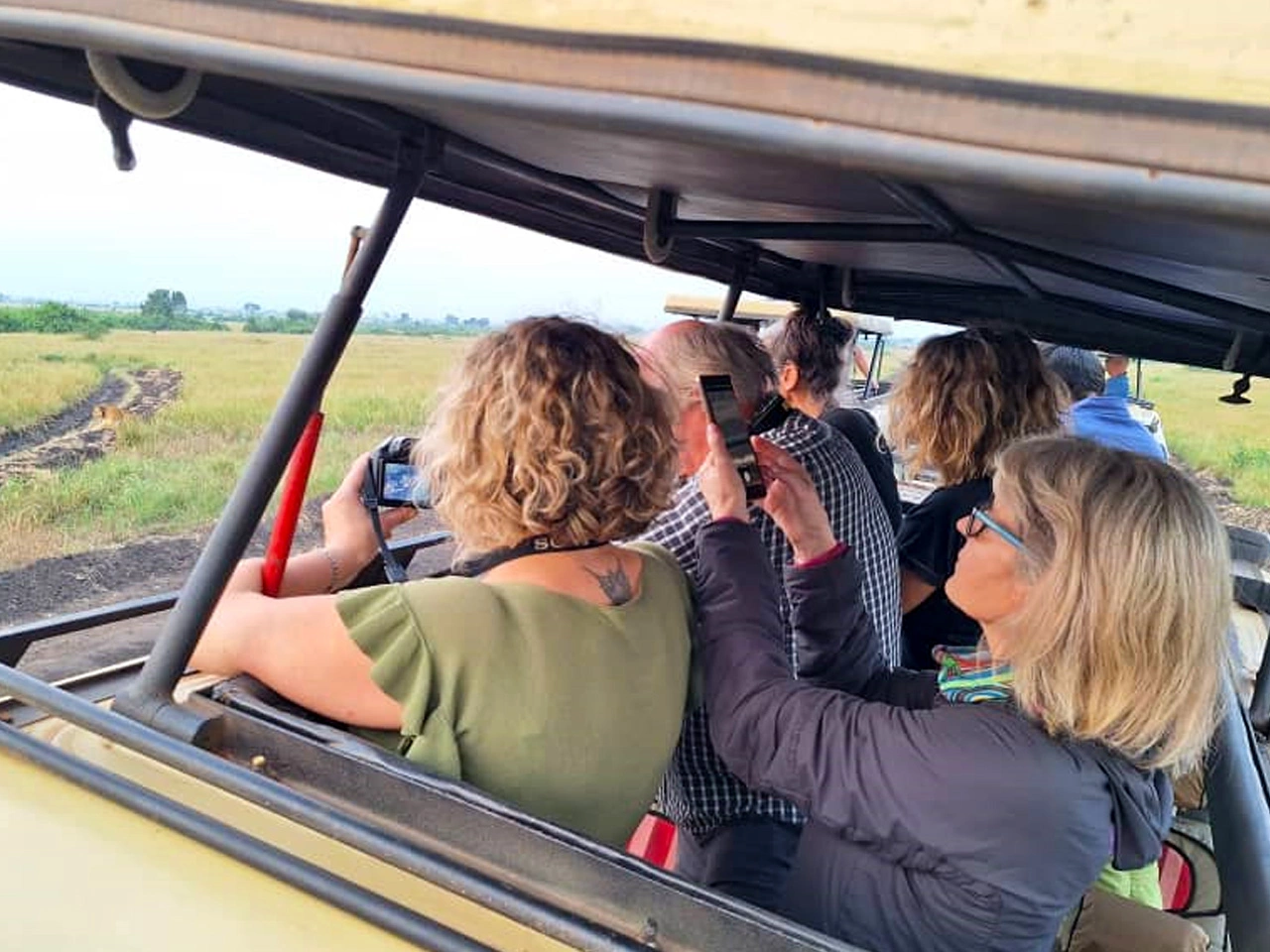 Why Walking Safaris Are Unique in Uganda
Why Walking Safaris Are Unique in Uganda
What makes a walking safari different from a game drive in Uganda, and what unique experiences do they offer? Walking safaris allow travelers to engage deeply with Uganda’s natural environments. Whether tracking elephants, observing birds, or following animal trails, guests develop a heightened awareness of ecological patterns. Guides often share insights into predator-prey dynamics, forest regeneration, and the behaviors of smaller creatures such as monitor lizards, duikers, and marsh birds that might go unnoticed on a game drive.
Additionally, walking safaris promote a sustainable and low-impact form of tourism. By minimizing vehicle use, these excursions reduce carbon emissions and prevent soil compaction, preserving sensitive habitats. Can walking safaris be combined with Uganda Gorilla Trekking Safaris? Yes, many travelers choose to combine the intimacy of walking in forests with the majesty of gorilla encounters in Bwindi or Mgahinga. This creates a layered adventure where guests witness both small-scale ecological interactions and large, iconic wildlife species in their natural habitats.
Walking safaris also offer cultural engagement opportunities. In regions like Kidepo Valley or Lake Mburo, guides may introduce travelers to pastoral communities, share traditional hunting or farming practices, and explain how local people coexist with wildlife. This cultural context enriches Uganda Cultural Safaris, making the walking safari an educational and transformative experience that goes beyond wildlife observation.
What Are the Safety Considerations?
What makes a walking safari different from a game drive in Uganda in terms of safety? Walking safaris involve a closer proximity to wildlife, which requires trained guides, strict protocols, and guest attentiveness. EcoQuest Safaris ensures that all walking excursions are conducted with the utmost safety in mind, with rangers trained in first aid, wildlife behavior, and navigation.
While game drives provide a physical barrier between guests and animals, walking safaris rely on knowledge, vigilance, and understanding of animal signals to ensure safe encounters. Can walking safaris be combined with Uganda Birding Safaris safely? Yes — expert guides maintain safe distances from both birds and other wildlife, while allowing guests to experience the forest or savannah quietly and intimately.
Safety also extends to environmental awareness. Guests are educated on avoiding sensitive habitats, minimizing noise, and leaving no trace, which ensures both their safety and the protection of wildlife. For travelers seeking Uganda Best Safaris experiences, walking safaris offer a thrilling yet secure way to explore natural environments, complementing vehicle-based game drives and Uganda Gorilla Trekking Safaris for a holistic adventure.
How Can Walking Safaris Be Combined With Cultural Experiences?
What makes a walking safari different from a game drive in Uganda, and how can cultural experiences enhance it? Walking safaris often traverse areas inhabited by local communities, allowing for immersive cultural interactions. Guests may visit Batwa communities near Bwindi Impenetrable Forest, observe traditional farming techniques, participate in cultural ceremonies, or learn about local medicinal plants.
Unlike game drives, walking safaris provide slower, more intimate access to human habitats, fostering understanding of how communities coexist with wildlife. Can walking safaris be combined with Uganda Gorilla Trekking Safaris and Uganda Chimpanzee Safaris? Absolutely — a single itinerary can include forest walks for wildlife observation, gorilla trekking for primate encounters, and cultural visits for heritage experiences. This combination maximizes both educational and adventure value, creating one of Uganda’s most memorable and responsible Uganda Safaris.
Cultural immersion also contributes to conservation awareness. By interacting with local communities, travelers learn how indigenous knowledge supports forest and wildlife preservation. EcoQuest Safaris ensures that these encounters are respectful, ethical, and supportive of community development, reinforcing the sustainability of Uganda Best Safaris.
Conclusion: Choosing Between Walking Safaris and Game Drives
So, what makes a walking safari different from a game drive in Uganda? Walking safaris offer an intimate, sensory-rich experience that allows travelers to connect closely with Uganda’s wildlife, ecosystems, and local communities. Game drives, on the other hand, provide broader coverage of large landscapes and quicker sightings of iconic animals. Both are integral to Uganda Wildlife Safaris and can be combined with Uganda Gorilla Trekking Safaris, Uganda Birding Safaris, and Uganda Cultural Safaris for a complete adventure.
Understanding the differences enables travelers to tailor their Uganda Best Safaris experience. Walking safaris emphasize ecological education, mindfulness, and cultural engagement, while game drives focus on accessibility, comfort, and large-scale wildlife viewing. EcoQuest Safaris ensures that both experiences are conducted safely, ethically, and with expert guidance, providing memorable, responsible, and enriching encounters with Uganda’s extraordinary wildlife and cultural heritage.
By choosing to include walking safaris in an itinerary, travelers gain a unique perspective on the African wilderness, complementing game drives and primate encounters for an unforgettable Uganda Safari.

